Intervju med Joan Torres
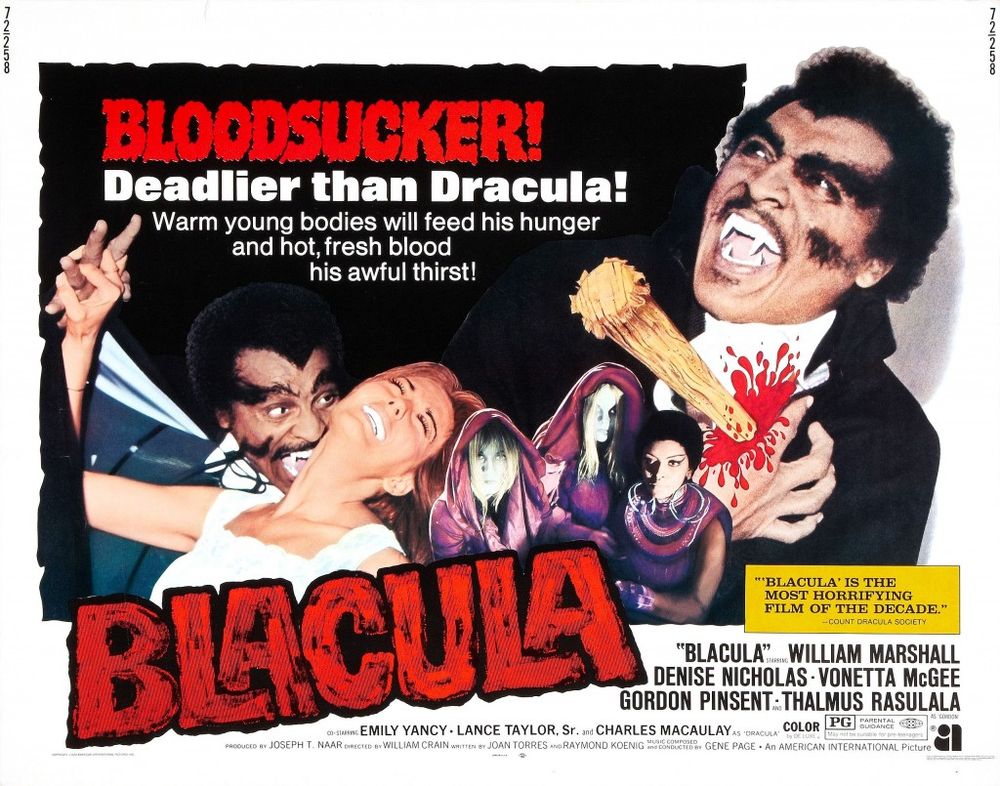
Det första ett inbitet fan tänker på om man hör orden blaxploitation och skräck i samma mening är förmodligen Blacula. Att då under en temavecka tillägnad Blaxploitation Horror få intervjua kvinnan som skrev manusen till båda Blacula-filmerna känns inte mer än passande och det har varit en sann ära att ha konverserat med Joan Torres om hennes odödliga skapelser, som 45 år senare fortfarande lever vidare i populärkulturen. Trevlig läsning!
Was Blacula an idea you and co-writer Raymond Koenig came up with and sold to American International Pictures, or were you commissioned to write the script based one someone else's idea?
Blacula was an idea Raymond and I came up with which meant we wrote the script on spec. I had an agent by then and he was interested in my writing so when Raymond and I finished the script I submitted it to him and he found the producer, Joe Naar, who had been his boss and the head of literary at CMA. I believe this was Joe’s first outing as a producer.
How did your working relationship with co-writer Raymond Koenig look like?
Raymond and I talked everything through and then I’d write it up.
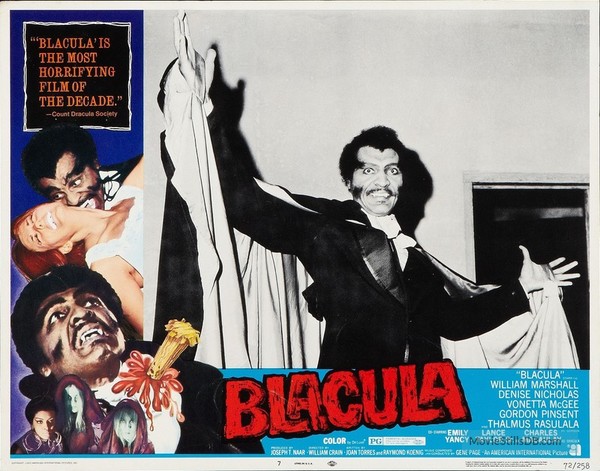
It's no secret studios didn't want to spend too much on these types of movies, with hardly any having a budget over 500,000 dollars. With that said and without going into too much specifics, do you think the two of you were fairly compensated for your work on both movies?
The film was initially budgeted at $350,000. We were paid approximately 10% of that. When the budget went up we were compensated some more. The budget by the end of shooting was $750,000. For the time and the price of the below the line costs we were adequately compensated, mainly because we had a very good lawyer who managed to get us profit participation. That bit has meant ongoing returns for the two of us.
Since these movies during the blaxploitation era were specifically targeted at black audiences, were you given any guidelines by the studio about things to include in the script that would appeal to African Americans?
There was lots of squabbling about what worked and what didn’t in the original script. It was the first vampire love story and the studio wanted us to drop that. They said no one would believe it. But we fought like crazy to keep it. I personally think that the humanizing element of the love story is one of the elements that has endeared it over time. We also had written a slightly ambiguous and romantic ending. The studio insisted that black people wanted to see cops being killed and so our ending was trashed and there was that whole long cop killing sequence in the sewer. They also killed off his wife Tina and had him commit suicide. None of that was in our original.
 In an earlier conversation with me you made a good point about how you felt these two movies did not belong in the blaxploitation genre. Would you like to go into detail with my readers about why you feel they differ from the movies most associate with the term blaxploitation?
In an earlier conversation with me you made a good point about how you felt these two movies did not belong in the blaxploitation genre. Would you like to go into detail with my readers about why you feel they differ from the movies most associate with the term blaxploitation?
Blaxploitation was a term that came up at the time to define films like Super Fly and Black Caesar. Blacula was a vampire movie. Other than that ending in the sewer there was no exploitive elements in the picture. The story did not pander to violence for the sake of it or portray drug use and pimping as something flashy.
The success of the Blacula movies inadvertently inspired a string of other black-themed horror movies that followed, such as Blackenstein, Abby and Dr. Black, Mr. Hyde. Do you take pride in having been a part of something that ultimately gave the black audiences more variety in their entertainment?
Ray and I were asked to write Blackenstein but we refused. It seemed ridiculous. When Bill Marshall and I became friends I wrote a film for him called Dr. Jekyll and Mr. Jive. By then Bill had a 5 picture deal with AIP, but it never got made. Later someone made Dr. Black, Mr. Hyde. I never saw it. I did see Abby because of Bill. At the time we wrote the original Blacula Ray and I thought we were part of a movement to open up the industry to African Americans. But it has taken a very long time for that to truly happen. It is happening now and it’s about time.
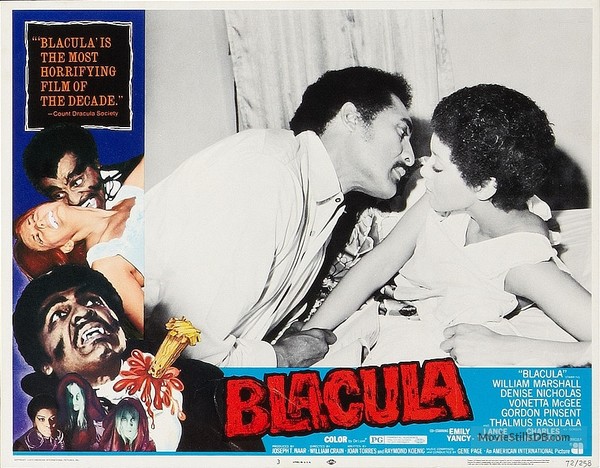
There's something in the first Blacula that was very progressive in how it showed a gay couple without making a big deal out of them being gay, they weren't caricatures or anything. Did you create those characters as a message for a more tolerant society?
We were very aware that gay life was never shown in movies except as either evil, predatory or cartoonish. Plus we had to find a way to get the coffin from Transylvania to LA so the idea of two gay interior decorators came up and we ran with it. We also loved the idea of the gay vampire cruising.
Detective shows were dominating the airwaves in the 70's, was that something you drew inspiration from? Because the first Blacula in particular feels like a mash-up of the horror and detective genres.
We weren’t aware of mashing up detective genres but the original book by Bram Stoker has that element. And most of the Hammer films have that element. So it was more in that vein, so to speak.
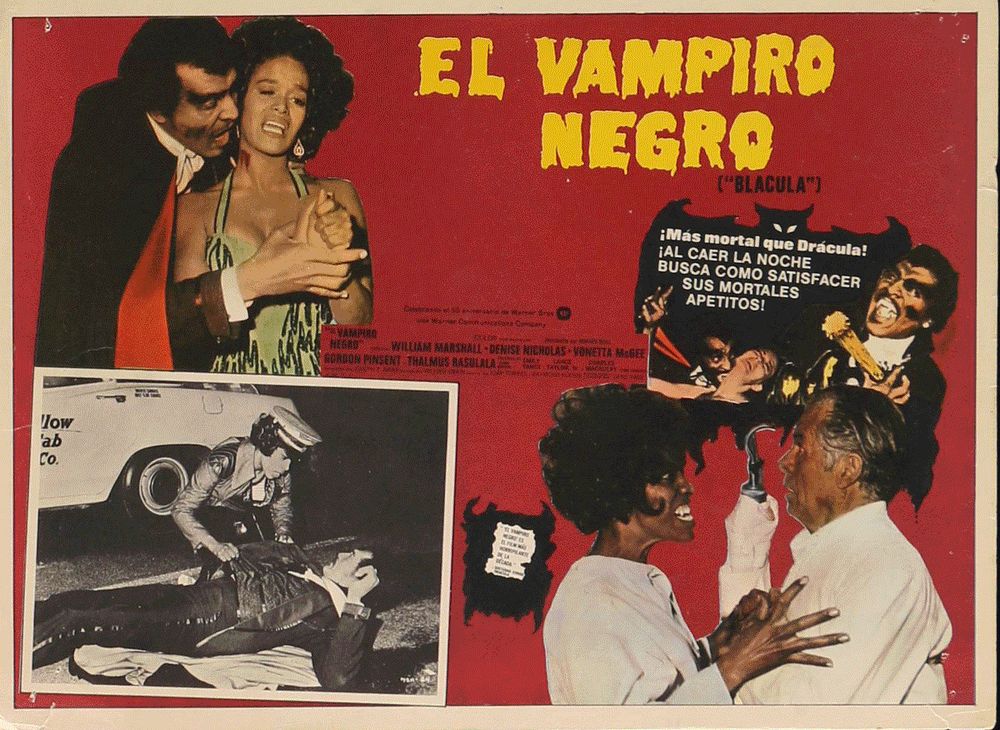
I have to say about William Marshall that, as time went on, he became very inventive about what was in the original script and how much input he had. From the beginning Ray and I wanted the main character to be noble. The African prince who is in Europe trying to stop the slave trade was there from the start. Blacula was never an American tourist. Aside from his terrific performance, Bill’s big contribution to the movie was the name Mamuwalde. I later heard him on an interview saying we had named the main character Andrew Brown as a put down and a reference to Amos and Andy, a dated Black radio and TV show. That was never the case. My brother’s name is Andrew which was why we called him Andrew and the name Brown was something the character, in an effort to come up with something on the spur of the moment, just pulled out of the air.
Speaking of which, I think one of the things that elevates these movies is William Marshall's portrayal as Mamuwalde. He brought a certain gravitas and indeed dignity to the part, you could just tell he was a classically trained theater actor. What did you think of his work on the movies and was the character written with him in mind?
Bill was wonderful in the part but although I had seen him in Demetrius and the Gladiators and a couple of other films and some TV work, like Star Trek, he never came to mind. The original choices were Max Julien, Raymond St.Jacques and Sammy Davis Jr. But Bill was magnificent. He had been touring Europe for years as Othello and was a towering figure with a wonderful voice.
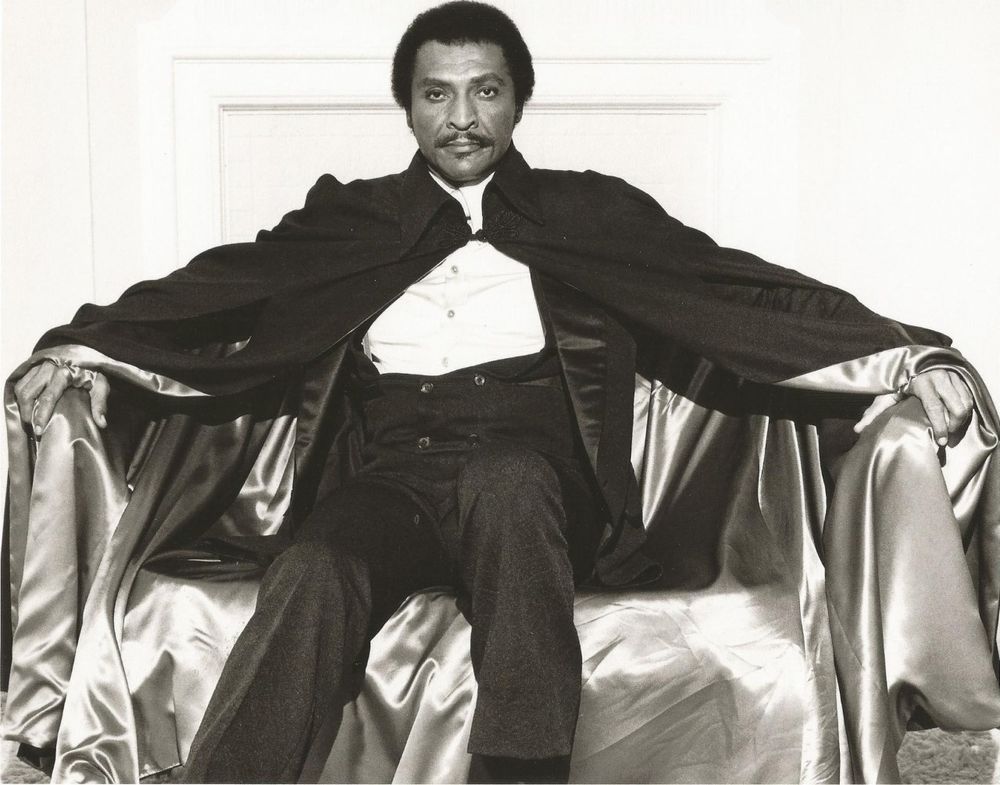
Blacula was an idea Raymond and I came up with which meant we wrote the script on spec. I had an agent by then and he was interested in my writing so when Raymond and I finished the script I submitted it to him and he found the producer, Joe Naar, who had been his boss and the head of literary at CMA. I believe this was Joe’s first outing as a producer.
How did your working relationship with co-writer Raymond Koenig look like?
Raymond and I talked everything through and then I’d write it up.

It's no secret studios didn't want to spend too much on these types of movies, with hardly any having a budget over 500,000 dollars. With that said and without going into too much specifics, do you think the two of you were fairly compensated for your work on both movies?
The film was initially budgeted at $350,000. We were paid approximately 10% of that. When the budget went up we were compensated some more. The budget by the end of shooting was $750,000. For the time and the price of the below the line costs we were adequately compensated, mainly because we had a very good lawyer who managed to get us profit participation. That bit has meant ongoing returns for the two of us.
Since these movies during the blaxploitation era were specifically targeted at black audiences, were you given any guidelines by the studio about things to include in the script that would appeal to African Americans?
There was lots of squabbling about what worked and what didn’t in the original script. It was the first vampire love story and the studio wanted us to drop that. They said no one would believe it. But we fought like crazy to keep it. I personally think that the humanizing element of the love story is one of the elements that has endeared it over time. We also had written a slightly ambiguous and romantic ending. The studio insisted that black people wanted to see cops being killed and so our ending was trashed and there was that whole long cop killing sequence in the sewer. They also killed off his wife Tina and had him commit suicide. None of that was in our original.

Blaxploitation was a term that came up at the time to define films like Super Fly and Black Caesar. Blacula was a vampire movie. Other than that ending in the sewer there was no exploitive elements in the picture. The story did not pander to violence for the sake of it or portray drug use and pimping as something flashy.
The success of the Blacula movies inadvertently inspired a string of other black-themed horror movies that followed, such as Blackenstein, Abby and Dr. Black, Mr. Hyde. Do you take pride in having been a part of something that ultimately gave the black audiences more variety in their entertainment?
Ray and I were asked to write Blackenstein but we refused. It seemed ridiculous. When Bill Marshall and I became friends I wrote a film for him called Dr. Jekyll and Mr. Jive. By then Bill had a 5 picture deal with AIP, but it never got made. Later someone made Dr. Black, Mr. Hyde. I never saw it. I did see Abby because of Bill. At the time we wrote the original Blacula Ray and I thought we were part of a movement to open up the industry to African Americans. But it has taken a very long time for that to truly happen. It is happening now and it’s about time.

There's something in the first Blacula that was very progressive in how it showed a gay couple without making a big deal out of them being gay, they weren't caricatures or anything. Did you create those characters as a message for a more tolerant society?
We were very aware that gay life was never shown in movies except as either evil, predatory or cartoonish. Plus we had to find a way to get the coffin from Transylvania to LA so the idea of two gay interior decorators came up and we ran with it. We also loved the idea of the gay vampire cruising.
Detective shows were dominating the airwaves in the 70's, was that something you drew inspiration from? Because the first Blacula in particular feels like a mash-up of the horror and detective genres.
We weren’t aware of mashing up detective genres but the original book by Bram Stoker has that element. And most of the Hammer films have that element. So it was more in that vein, so to speak.

I've read that in an early draft of your script, the man who becomes Blacula was an American tourist, but that William Marshall wanted that changed in order to give the character more dignity by making him a Prince who wanted to stop the slave trade. Is this true?
I have to say about William Marshall that, as time went on, he became very inventive about what was in the original script and how much input he had. From the beginning Ray and I wanted the main character to be noble. The African prince who is in Europe trying to stop the slave trade was there from the start. Blacula was never an American tourist. Aside from his terrific performance, Bill’s big contribution to the movie was the name Mamuwalde. I later heard him on an interview saying we had named the main character Andrew Brown as a put down and a reference to Amos and Andy, a dated Black radio and TV show. That was never the case. My brother’s name is Andrew which was why we called him Andrew and the name Brown was something the character, in an effort to come up with something on the spur of the moment, just pulled out of the air.
Speaking of which, I think one of the things that elevates these movies is William Marshall's portrayal as Mamuwalde. He brought a certain gravitas and indeed dignity to the part, you could just tell he was a classically trained theater actor. What did you think of his work on the movies and was the character written with him in mind?
Bill was wonderful in the part but although I had seen him in Demetrius and the Gladiators and a couple of other films and some TV work, like Star Trek, he never came to mind. The original choices were Max Julien, Raymond St.Jacques and Sammy Davis Jr. But Bill was magnificent. He had been touring Europe for years as Othello and was a towering figure with a wonderful voice.

William Marshall poses as Abraham Lincoln in his Blacula outfit. Photo by Art Zeller and provided by Joan Torres
You used voodoo to resurrect Mamuwalde in the sequel Scream, Blacula, Scream and it served as the main theme of the movie. What was it that made you choose voodoo for the next one?
As I said, we had left the ending of the original somewhat ambiguous. In the second film we envisioned Blacula and Tina married and living in some out of the way place with a baby. We wanted to do Son of Blacula. As the child grows up and starts to show signs of vampirism Blacula decides to seek a cure in Haiti. So the three of them travel to the Caribbean and get involved with voodoo. I was living in Cambridge, Massachusetts by then and had access to the Harvard Library. I read what they had on voodoo and incorporated it into the script. The ending was supposed to be the big fight between Blacula and the zombies. When I came back to LA Ray and I wrote the script and turned it in. But the studio said “We want what worked last time, not something original.” That’s Hollywood for you.
As I said, we had left the ending of the original somewhat ambiguous. In the second film we envisioned Blacula and Tina married and living in some out of the way place with a baby. We wanted to do Son of Blacula. As the child grows up and starts to show signs of vampirism Blacula decides to seek a cure in Haiti. So the three of them travel to the Caribbean and get involved with voodoo. I was living in Cambridge, Massachusetts by then and had access to the Harvard Library. I read what they had on voodoo and incorporated it into the script. The ending was supposed to be the big fight between Blacula and the zombies. When I came back to LA Ray and I wrote the script and turned it in. But the studio said “We want what worked last time, not something original.” That’s Hollywood for you.
We managed to keep some of the voodoo stuff but the whole concept got pretty mashed up. Then we were written off it and the director brought in a friend of his to rewrite it. The final film was a disaster at the time. It sunk like a stone and, as far as we were concerned, made no sense. There were bits and pieces from our script that were dropped in so the plot never really coalesced. Later that year it won a Golden Turkey Award.
Scream, Blacula, Scream was released only 10 months after Blacula had its premiere. When did you get the go-ahead to write the sequel, and do you feel you were given enough time go come up with a good script in such a short period of time?
We were working on the sequel before the film came out. Then when the first one was a hit we knew we’d get the go ahead so we continued with our idea. The first draft of the first film took three months to write. The first draft of the second one took about five months. Then when I got back to LA and they wanted something different we pulled that together in about two months, before we were dropped.
 To me, Mamuwalde is a much more compelling and sympathetic character than other vampire characters popular in movies around that time, like Dracula and Count Yorga. In the first one, all he wants is to connect with his wife again and in the sequel he fights to get rid of the curse that Dracula put upon him. What made you decide to take the character in this direction instead of just making him a typical movie monster?
To me, Mamuwalde is a much more compelling and sympathetic character than other vampire characters popular in movies around that time, like Dracula and Count Yorga. In the first one, all he wants is to connect with his wife again and in the sequel he fights to get rid of the curse that Dracula put upon him. What made you decide to take the character in this direction instead of just making him a typical movie monster?
We wanted him to be a noble and a sympathetic character, not a villain. Just as a note: the guy who ruined the second Blacula film was the guy who made Count Yorga. Long after we’d been written off the film we ran into him at a screening and he said “Don’t worry kids, I fixed the ending.” He was a pompous ass. I had gone to him when we were asked to rewrite the second script and said: We know you are going to direct this so why don’t we work together from the beginning on it? He responded: “Look, honey, you go home and do your work and bring it in here and I’ll do mine.” His name was Bob Kelljan and he had done two weeks of pick-up work on the awakening scene in the warehouse for the first Blacula. After that Joe Naar thought he was a genius. So goes it.
There's plenty of language typically spoken by African Americans from that period of time in the movie. Were you or Raymond hip to the lingo, so to say, or did you get help with some of the dialogue from someone else?
Ray and I had an black artist friend named Wallace Sides who even did a terrific script cover for our original script with the original actors who were being considered for the role. Anyway, we were told by the studio to “black it up” so we called Wally and he came up with some of those great lines as well as the obsequious character for the funeral director. We paid him and tried to get him some screen credit but we weren’t able to. But on the second picture he got paid by the studio and got a screen credit.
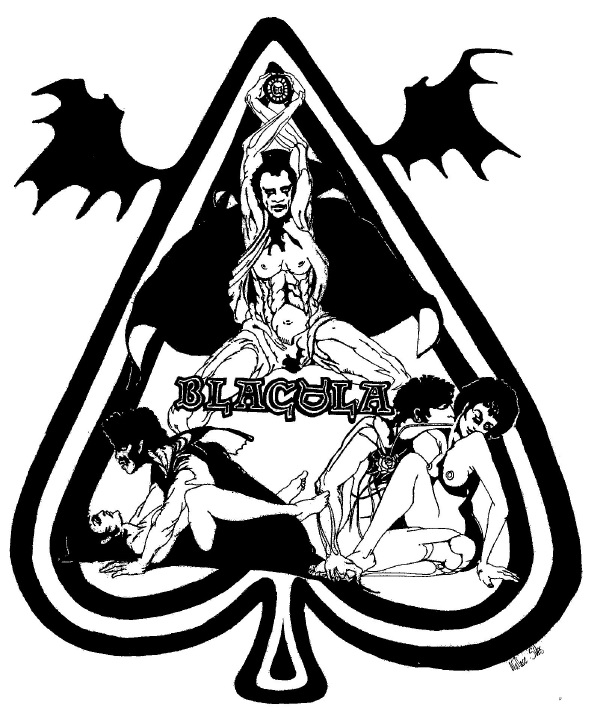
Did you spend any time on set during the filming of the movies? Any stories to share?
I went back to Cambridge right after we sold the script and got paid, so I wasn’t around on the first one. Raymond was. But I was around on the 2nd one and that’s when I met Bill. He and I became friends, the stories however are pretty funky so I’ll just share a couple:
Bob Kelljan brought his girlfriend to the set one day and asked Bill Marshall to do a pose with her as if he's biting her neck, just for laughs. So Bill did it. They then turned around and made that the one sheet for the picture. There was obviously no white woman in the picture that Bill bites. Bill was furious. He'd been tricked. He never forgot that. I have to say about Bill that he was extremely volatile and could get very threatening. This was a guy who was 6'5" and built. He told me this little tidbit from the first film: there was a scene in an alley where a cop points a gun at him and fires. Well, Bill didn't want to do it. Too many accidents on sets with guns. He got into a fight about it with the original director, Bill Crain. According to Bill Marshall, at one point he caught himself and said to Bill Crain: "Do you realize we are the only two niggers on the set and we're fighting?"
Do you remember if there were a lot of scenes you wrote that didn't make it into the movies? Any specific scene you were sad was left out?
The first film stuck pretty closely to what we had done, until that final sequence. I have to say that they also cut a very funny line of mine where one cop says to another about Blacula: "Is he armed?" and the other cop answers "To the teeth." In the second film they cut an even funnier line when Blacula rips out Willis' heart and a cop comes in and sees him. Blacula says "You caught me red-handed." Oh well. That's the breaks in movieland.The second film got completely botched as far as I’m concerned.

What were your thoughts the first time you saw the finished films and have your opinion on them changed over the years?
I was horrified when I saw the level of production on the first picture. We had spent so much time with Joe Naar looking at films by the original cinematographer, Dick Halsey. Then Sam Arkoff, who ran AIP saw the scenes Dick had shot and wanted him fired because they were too dark and atmospheric and “No one will be able to see them in the drive-ins.” That is why the film looks so uneven. The pictures of Tina running through the neighborhood and how beautiful she and her sister look, that was all Dick Halsey. Anyway, I thought Bill was dazzling in the title role. But I only saw the second picture once. It deserved that Golden Turkey. Obviously the first one is my favorite.
Was there ever any talk of the two of you writing the screenplay for a third entry in the franchise? Any idea why we never got a third one?
One day Sam Arkoff walked by Ray and I as we waited for a meeting on the second picture. Joe Naar leapt to his feet and introduced us to The Great Man. Arkoff held up his index finger and said “Think about Blacula Meets Dr. Phibes” and kept on walking. Bill had a five picture deal at AIP but only did Abby. I had a deal at Bing Crosby Productions but then there was a writers strike and that picture got killed.

Surprisingly, these two screenplays are the only ones on your resumé. Was it a personal decision of yours to focus more on other writing duties?
During that writers strike, which lasted for months, I decided to move to Northern California with my son. I continued to write scripts on spec. When I returned to LA Ray and I worked together on a number of projects. Some got optioned. Some got bought and never made. There’s a saying in Hollywood that only 2 out of every 10 scripts bought get made. I got some television work. Raymond did some leg work for a Hollywood gossip columnist. Then I won a National Endowment for a screenplay of mine and started work on a novel. I wrote a self help book called Men Who Hate Women and the Women Who Love Them with a psychologist, which became a big best seller. After that I wrote a play, etc.
It's been 45 years since these movies first premiered and both are undoubtedly cult classics, loved by fans of genre cinema all over the world. Are you surprised by the longevity of these movies?
I am astounded by their longevity. Who woulda thought???
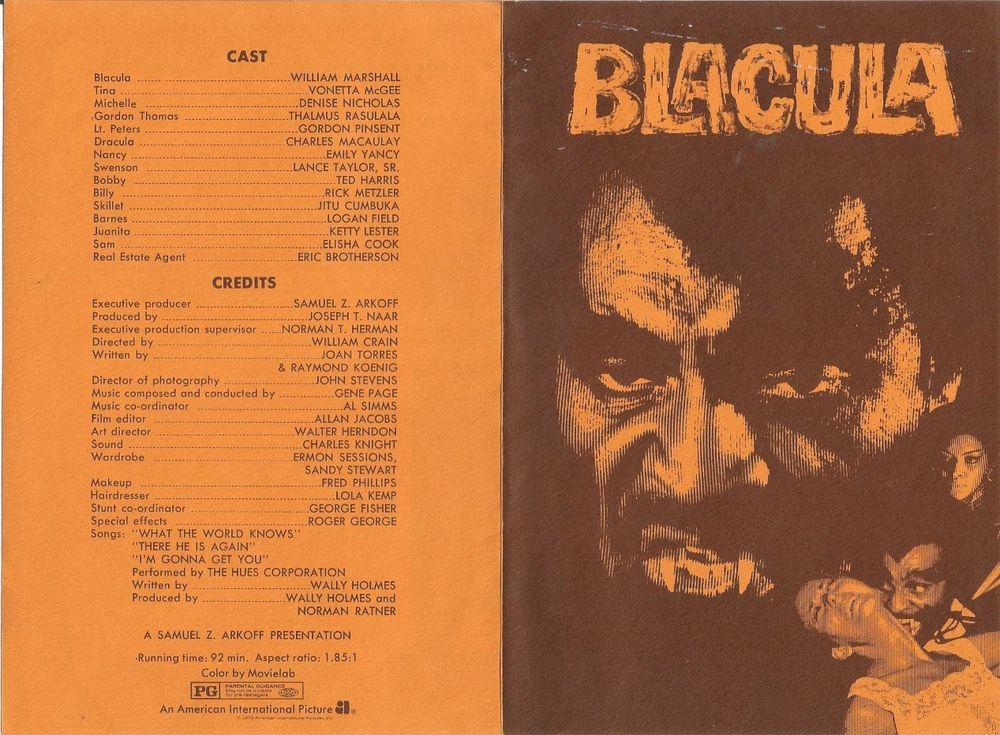

Finally, any last words you want to share with fans about your work on Blacula?
Well, it was quite a ride. Some terrific ups and some disappointing downs. In the end I’m glad we stuck to our guns and made them keep the love story. I still think it’s what makes the main character so memorable, that and Bill’s remarkable performance. He was a bit put off by the fact that he became known for this horror film when he had spent so much time as a serious Shakespearean actor. But he also loved the attention. I remember driving him around LA in an open car and young black men saying to him “Hey, you are my main man.” He hadn’t had that kind of attention from his community before and he loved it.
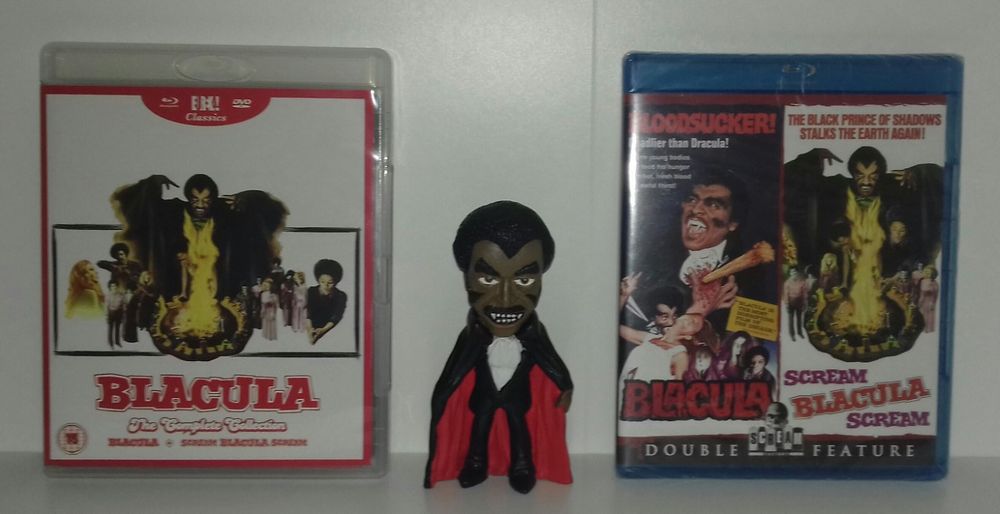
Scream, Blacula, Scream was released only 10 months after Blacula had its premiere. When did you get the go-ahead to write the sequel, and do you feel you were given enough time go come up with a good script in such a short period of time?
We were working on the sequel before the film came out. Then when the first one was a hit we knew we’d get the go ahead so we continued with our idea. The first draft of the first film took three months to write. The first draft of the second one took about five months. Then when I got back to LA and they wanted something different we pulled that together in about two months, before we were dropped.

We wanted him to be a noble and a sympathetic character, not a villain. Just as a note: the guy who ruined the second Blacula film was the guy who made Count Yorga. Long after we’d been written off the film we ran into him at a screening and he said “Don’t worry kids, I fixed the ending.” He was a pompous ass. I had gone to him when we were asked to rewrite the second script and said: We know you are going to direct this so why don’t we work together from the beginning on it? He responded: “Look, honey, you go home and do your work and bring it in here and I’ll do mine.” His name was Bob Kelljan and he had done two weeks of pick-up work on the awakening scene in the warehouse for the first Blacula. After that Joe Naar thought he was a genius. So goes it.
There's plenty of language typically spoken by African Americans from that period of time in the movie. Were you or Raymond hip to the lingo, so to say, or did you get help with some of the dialogue from someone else?
Ray and I had an black artist friend named Wallace Sides who even did a terrific script cover for our original script with the original actors who were being considered for the role. Anyway, we were told by the studio to “black it up” so we called Wally and he came up with some of those great lines as well as the obsequious character for the funeral director. We paid him and tried to get him some screen credit but we weren’t able to. But on the second picture he got paid by the studio and got a screen credit.

Wallace Sides' artwork for the script cover, provided by Joan Torres
Did you spend any time on set during the filming of the movies? Any stories to share?
I went back to Cambridge right after we sold the script and got paid, so I wasn’t around on the first one. Raymond was. But I was around on the 2nd one and that’s when I met Bill. He and I became friends, the stories however are pretty funky so I’ll just share a couple:
Bob Kelljan brought his girlfriend to the set one day and asked Bill Marshall to do a pose with her as if he's biting her neck, just for laughs. So Bill did it. They then turned around and made that the one sheet for the picture. There was obviously no white woman in the picture that Bill bites. Bill was furious. He'd been tricked. He never forgot that. I have to say about Bill that he was extremely volatile and could get very threatening. This was a guy who was 6'5" and built. He told me this little tidbit from the first film: there was a scene in an alley where a cop points a gun at him and fires. Well, Bill didn't want to do it. Too many accidents on sets with guns. He got into a fight about it with the original director, Bill Crain. According to Bill Marshall, at one point he caught himself and said to Bill Crain: "Do you realize we are the only two niggers on the set and we're fighting?"
Do you remember if there were a lot of scenes you wrote that didn't make it into the movies? Any specific scene you were sad was left out?
The first film stuck pretty closely to what we had done, until that final sequence. I have to say that they also cut a very funny line of mine where one cop says to another about Blacula: "Is he armed?" and the other cop answers "To the teeth." In the second film they cut an even funnier line when Blacula rips out Willis' heart and a cop comes in and sees him. Blacula says "You caught me red-handed." Oh well. That's the breaks in movieland.The second film got completely botched as far as I’m concerned.

What were your thoughts the first time you saw the finished films and have your opinion on them changed over the years?
I was horrified when I saw the level of production on the first picture. We had spent so much time with Joe Naar looking at films by the original cinematographer, Dick Halsey. Then Sam Arkoff, who ran AIP saw the scenes Dick had shot and wanted him fired because they were too dark and atmospheric and “No one will be able to see them in the drive-ins.” That is why the film looks so uneven. The pictures of Tina running through the neighborhood and how beautiful she and her sister look, that was all Dick Halsey. Anyway, I thought Bill was dazzling in the title role. But I only saw the second picture once. It deserved that Golden Turkey. Obviously the first one is my favorite.
Was there ever any talk of the two of you writing the screenplay for a third entry in the franchise? Any idea why we never got a third one?
One day Sam Arkoff walked by Ray and I as we waited for a meeting on the second picture. Joe Naar leapt to his feet and introduced us to The Great Man. Arkoff held up his index finger and said “Think about Blacula Meets Dr. Phibes” and kept on walking. Bill had a five picture deal at AIP but only did Abby. I had a deal at Bing Crosby Productions but then there was a writers strike and that picture got killed.

Surprisingly, these two screenplays are the only ones on your resumé. Was it a personal decision of yours to focus more on other writing duties?
During that writers strike, which lasted for months, I decided to move to Northern California with my son. I continued to write scripts on spec. When I returned to LA Ray and I worked together on a number of projects. Some got optioned. Some got bought and never made. There’s a saying in Hollywood that only 2 out of every 10 scripts bought get made. I got some television work. Raymond did some leg work for a Hollywood gossip columnist. Then I won a National Endowment for a screenplay of mine and started work on a novel. I wrote a self help book called Men Who Hate Women and the Women Who Love Them with a psychologist, which became a big best seller. After that I wrote a play, etc.
It's been 45 years since these movies first premiered and both are undoubtedly cult classics, loved by fans of genre cinema all over the world. Are you surprised by the longevity of these movies?
I am astounded by their longevity. Who woulda thought???


The invitation to the Los Angeles premiere of Blacula, provided by Joan Torres
Finally, any last words you want to share with fans about your work on Blacula?
Well, it was quite a ride. Some terrific ups and some disappointing downs. In the end I’m glad we stuck to our guns and made them keep the love story. I still think it’s what makes the main character so memorable, that and Bill’s remarkable performance. He was a bit put off by the fact that he became known for this horror film when he had spent so much time as a serious Shakespearean actor. But he also loved the attention. I remember driving him around LA in an open car and young black men saying to him “Hey, you are my main man.” He hadn’t had that kind of attention from his community before and he loved it.

Stort tack till Joan Torres för alla nya guldklimpar, båda anekdota och visuella, om Blacula!